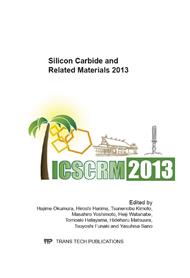p.424
p.428
p.432
p.436
p.440
p.444
p.449
p.453
p.457
Single Event Gate Rupture in SiC MOS Capacitors with Different Gate Oxide Thicknesses
Abstract:
The leakage currents through the gate oxide of MOS capacitors fabricated on n-type 4H-Silicon Carbide (SiC) was measured under accumulation bias conditions with heavy-ion irradiation. The Linear Energy Transfer (LET) dependence of the critical electric field (Ecr) at which dielectric breakdown occurred in these capacitors with two different oxide thicknesses was evaluated. The MOS capacitors with thin gate oxide showed higher Ecr values than those with thick gate oxide. The linear relationship between the reciprocal Ecr and LET was observed for both MOS capacitors. The slope of LET dependence of 1/Ecr for SiC MOS capacitors was smaller than that for Si, suggesting that SiC MOS devices are less susceptible to single-event gate rupture (SEGR) than Si MOS devices.
Info:
Periodical:
Pages:
440-443
Citation:
Online since:
February 2014
Authors:
Price:
Сopyright:
© 2014 Trans Tech Publications Ltd. All Rights Reserved
Share:
Citation:


